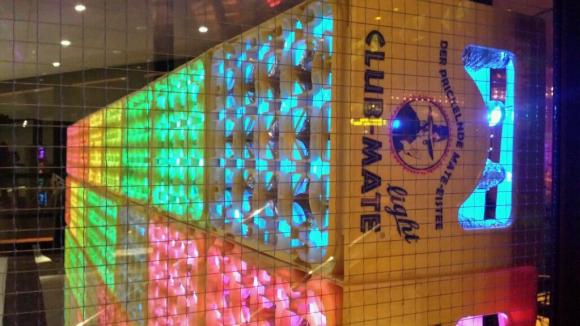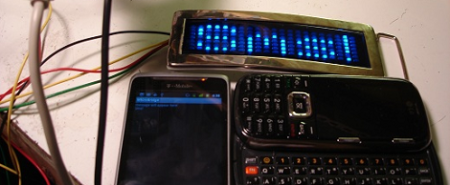
What better way to make a giant LED display than out of old empties and bottle crates? This is the Mate Light (pronounced Mah-Tay).
We were first introduced to the ever popular Club-Mate soda at one of the first hackerspaces we visited during our Hackerspacing in Europe Tour. It’s a soft drink produced in Germany, which seems to be the exclusive non-alcoholic drink of choice for almost all hackerspaces in Western Europe. The spaces in the Netherlands and Belgium would even make road trips to Germany just to load up a van with the drink to bring back home. Personally we didn’t really understand what was so special about it, but maybe we just didn’t drink enough!
Anyway, this impressive display makes use of 640 empties arranged in 4 rows of 8 crates for a decent 16 x 40 resolution. Each bottle is wrapped in aluminum foil and contains one RGB LED with a WS2801 driver. Each row of crates is connected to a TI Stellaris Launchpad, which has four hardware SPI interfaces — conveniently the number of rows of crates used! From there, an ancient ThinkPad T22 laptop runs the control program over USB to the microcontroller board. Their first software implementation used a Python script which was painfully slow — they’re now putting the finishing touches on using a C script instead.
Stick around to see the display in all of its awesomeness.
Continue reading “Massive LED Display Makes Use Of Reused Soda Bottles”












